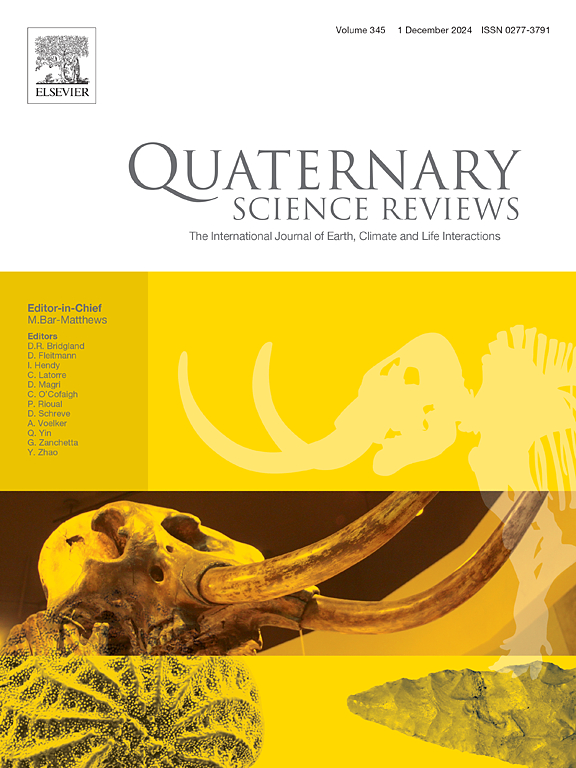The Canis lupus ssp. (Mammalia, Carnivora) of the Baume Traucade (Issirac, Gard, France): A complete skeleton of a “dog-like” individual from the post-LGM
IF 3.2
1区 地球科学
Q1 GEOGRAPHY, PHYSICAL
引用次数: 0
Abstract
Completely preserved canid skeletons dating from the Pleistocene are rare finds. Here, we describe such a unique discovery from Baume Traucade, a cave site in the municipality of Issirac in southern France, which presents a rare opportunity to study in detail a series of skeletal elements from the same individual. This canid was likely a female with an estimated body mass of 26 kg and a shoulder height of 62 cm. It has an age of approximately 16.0 to 15.3 cal ka BP. Impact marks on the lumbar vertebrae and ribs, along with circular perforations on one of the scapulae, suggest that this canid was wounded by humans shortly before its death. The Baume Traucade skeleton is compared to a series of reference groups, including fossil and extant wolves, as well as Palaeolithic, prehistoric, and recent dogs. Linear discriminant analysis of its ln-transformed raw craniometric variables assigns this canid to the putative Palaeolithic dog group with a posterior probability of 99.5% and a typicality probability of 49.8%. Linear discriminant analysis of its allometrically size-adjusted craniometric variables assigns it to the same group with a posterior probability of 96.7% and a typicality probability of 75.1%. Furthermore, based on univariate analyses of its mandible and long bones, the Baume Traucade canid also shows the closest affinity with the group of putative Palaeolithic dogs.
求助全文
约1分钟内获得全文
求助全文
来源期刊

Quaternary Science Reviews
地学-地球科学综合
CiteScore
7.50
自引率
15.00%
发文量
388
审稿时长
3 months
期刊介绍:
Quaternary Science Reviews caters for all aspects of Quaternary science, and includes, for example, geology, geomorphology, geography, archaeology, soil science, palaeobotany, palaeontology, palaeoclimatology and the full range of applicable dating methods. The dividing line between what constitutes the review paper and one which contains new original data is not easy to establish, so QSR also publishes papers with new data especially if these perform a review function. All the Quaternary sciences are changing rapidly and subject to re-evaluation as the pace of discovery quickens; thus the diverse but comprehensive role of Quaternary Science Reviews keeps readers abreast of the wider issues relating to new developments in the field.
 求助内容:
求助内容: 应助结果提醒方式:
应助结果提醒方式:


